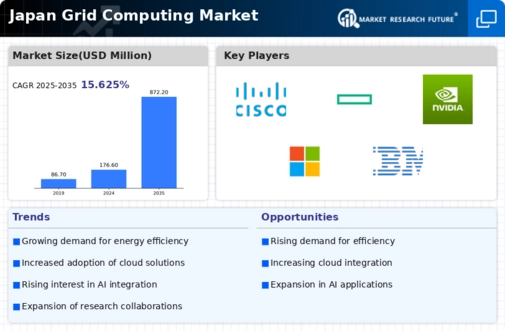Japan Grid Computing Market Summary
The Japan Grid Computing market is projected to experience substantial growth from 176.6 million USD in 2024 to 872.2 million USD by 2035.
Key Market Trends & Highlights
Japan Grid Computing Key Trends and Highlights
- The market valuation is expected to grow from 176.6 million USD in 2024 to 872.2 million USD by 2035.
- The compound annual growth rate (CAGR) for the Japan Grid Computing market is anticipated to be 15.63% from 2025 to 2035.
- This growth trajectory indicates a robust demand for grid computing solutions in various sectors across Japan.
- Growing adoption of cloud computing technologies due to increased efficiency and scalability is a major market driver.
Market Size & Forecast
| 2024 Market Size | 176.6 (USD Million) |
| 2035 Market Size | 872.2 (USD Million) |
| CAGR (2025-2035) | 15.63% |
Major Players
Cisco, Hewlett Packard Enterprise, NVIDIA, Microsoft, Fujitsu, IBM, Amazon Web Services















